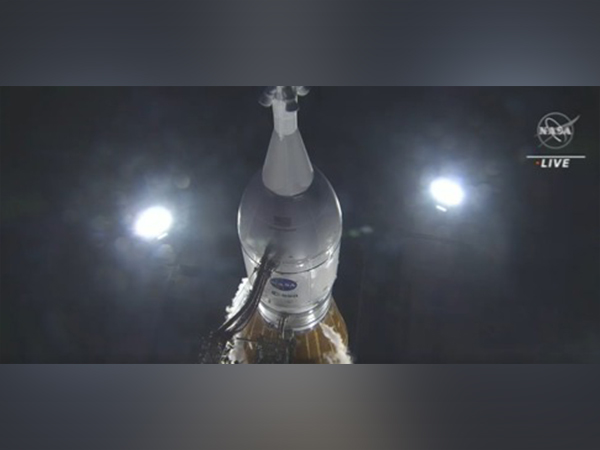
Washington [US], August 29 (ANI): The much-awaited launch of NASA‘s most powerful rocket Artemis 1, which is to go on a voyage around the moon, has been deferred and teams are working on “an issue with an engine bleed.” “The launch of Artemis I is no longer happening today as teams work through an issue with an engine bleed. Teams will continue to gather data, and we will keep you posted on the timing of the next launch attempt,”NASA said in a tweet.
The countdown clock was put on hold at T-40 minutes. The hydrogen team will discuss the plans with Artemis 1 launch director. “The countdown clock is on a hold at T-40 minutes. The hydrogen team of the @NASA_SLS rocket is discussing plans with the #Artemis I launch director,” NASA added.
NASA had planned to launch the Artemis I mission on Monday from Kennedy Space Center in Florida, sending the Space Launch System (SLS) rocket and Orion capsule on a more than month-long journey around the moon.
NASA said that the launch is on unplanned hold. “Launch is currently in an unplanned hold as the team works on an issue with engine number 3 on the @NASA_SLS core stage,” the US space agency said.
The teams are evaluating why the bleed test to condition the engines was not successful. Engineers are looking at options to gather as much data as possible. The Artemis I rocket and spacecraft are in stable, safe condition. While liquid oxygen loading into the interim cryogenic propulsion stage continues and core stage tanks continue to be replenished with propellants, engineers are troubleshooting an issue conditioning one of the RS-25 engines (engine 3) on the bottom of the core stage.
Rachel Kraft, Senior Communications Specialist, NASA, said launch controllers condition the engines by increasing pressure on the core stage tanks to bleed some of the cryogenic propellants to the engines to get them to the proper temperature range to start them. “Engine 3 is not properly being conditioned through the bleed process, and engineers are troubleshooting”.
Teams also are assessing what appears to be a crack in the thermal protection system material on one of the flanges on the core stage. The flanges are connection joints that function like a seam on a shirt, are affixed at the top and bottom of the intertank so the two tanks can be attached to it, Rachel said.
It’s the first mission in NASA‘s Artemis lunar program, which is expected to land the agency’s astronauts on the moon by its third mission in 2025.
NASA plans to fly Orion as close as 60 miles above the moon’s surface, before moving into a wide orbit around the lunar body. To return, Orion will use the moon’s gravity to assist it in setting a trajectory back into Earth’s orbit. Orion is expected to splash down in the Pacific Ocean off the coast of San Diego, California where a team of NASA and Department of Defense personnel will recover the capsule. (ANI)

















